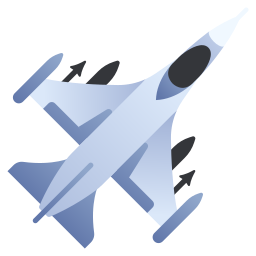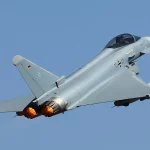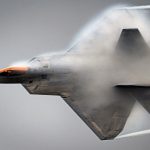
France has always been among the world’s leading aviation powers, and has been since the appearance of the first aircraft. French aviation was one of the strongest during World War I, but then the French lost ground, which was one of the reasons for the occupation in World War II. After its end, the French began to actively rebuild the national air force.
Experts believe that the Dassault Rafale will probably be the last fighter aircraft built entirely in a single European country.
History of creation
Development of the machine began in 1983. The military wanted a new single fighter aircraft that could perform a wide range of missions, fighting ground, air and surface targets. At the time, the situation was such that Dassault Aviacion was in no hurry to develop a new machine: France had a large number of new, modern aircraft.
Two years earlier, the French had withdrawn from the FEFA’s European fighter programme. The reason was simple: France wanted a light aircraft (up to 9,000 kg) that could be placed on the deck of an aircraft carrier, the rest of the programme wanted to develop a heavy fighter.
The French military wanted a compact, light, low-maintenance fighter that could replace the seven different aircraft in service with the French air force and navy at the time. For this reason, the Rafale can safely be described as a unique aircraft.
To create the Rafale, Dassault Aviacion’s designers drew on forty years of experience with the Mirage aircraft. It is easy to see the characteristics of the Rafale in this fighter aircraft.
In 1986, the Rafale made its maiden flight, called a prototype-demonstration modification of the aircraft. In essence, this was a prototype aircraft, on which various design and technological solutions for the future fighter were practised.
In 1991, another version of the Rafale took off, the Rafale C. It was a single-seat fighter-interceptor prototype. In the same year, the Rafale M, an aircraft designed for deployment on aircraft carriers, also took off. This Rafale differed in its heavier weight and reinforced chassis design.
These modifications were adopted by the French Navy in 2004 and by the French Air Force in 2006. In 2009, the French army ordered another 60 Dassault Rafale fighters.
In 2011, the French defence minister announced the end of Rafale production, but early the following year Dassault Aviation won a major contract to supply 126 Rafale aircraft to the Indian Air Force.
One report put the value of the contract signed with Dassault Aviation at $10.4 billion, while other reports said the French side was to receive more than $15 billion, including money for pilot training and aircraft maintenance.
Dassault Aviation was to deliver eighteen of the first aircraft to the Indians in 2020, with the rest to be manufactured locally. Last year it was reported that the contract had been cancelled. The reason was a significant increase in the cost of the fighters, as well as the manufacturer’s refusal to transfer the technology for the production of the machines to the customer.
It was also reported that India was now considering Russian Su-30s as a cheap replacement for the French machines.
Aircraft design
The Rafale multi-role fighter is designed without a tail, with a large-area triangular wing and large overhangs. At the front of the machine is an additional high horizontal tail.
The wing has two-section wingtips and single-section ailerons. One part of the wing is made of titanium alloys and the other of carbon fibre reinforced plastic.
The powerplant is twin-engine and is located at the rear of the aircraft. The Rafale is a single-wing aircraft.
Composite materials were used extensively in the construction of the machine. One of the tasks facing Dassault Aviacion’s designers was to reduce the fighter’s radar visibility. Composite materials account for 20 per cent of the aircraft’s surface area and 25 per cent of its mass. In addition to reducing the Rafale’s signature, this meant an increase in weight.
It should be noted that, although Dassault Aviacion’s designers paid great attention to reducing the aircraft’s radar visibility, they did not copy the American experience in this respect, but went their own way. As a result, simpler and, above all, cheaper solutions were found. Particularly problematic from the point of view of the radar visibility of the fighter (leading edges of the wing and tail, chassis flaps) were given characteristic saw teeth that significantly reduced their visibility.
The modification for the Navy is differentiated by a reinforced landing gear design, a special brake hook at the rear of the fighter, as well as a special Telemir system that synchronises the aircraft and ship’s navigation systems. As a result of these changes, the “naval” Rafale is five hundred kilograms heavier than the land-based version.
The aircraft’s powerplant consists of SNECMA M88-2-E4 twin-turbojet engines, which are built using the latest technologies and materials applied in this field.
The SNECMA M88-2-E4 has excellent performance, high controllability and an excellent thrust-to-weight ratio. The SNECMA M88-2-E4 has a modular design that facilitates maintenance and repair.
The development of the engines for this fighter was not an easy task. The customer demanded a product that would perform reliably in a variety of missions (agile air-to-air combat, high-speed air defence forward movement). At the same time, the engine had to have a long service life, an excellent thrust-to-weight ratio and low fuel consumption. The SNECMA M88-2-E4 installed on the Rafale was the first French third-generation turbojet engine.
All Rafale aircraft are equipped with a Messier-Dowty landing gear, the legs of which retract forward. Ground-based and deck-based fighters have different landing gear, the latter of which is reinforced.
The cockpits of the “Rafale” single-seaters are equipped with Martin-Baker Mk.16 ejection seats, the cockpit lantern opening to the right. The pilot’s seat is distinguished by its excellent ergonomics. Flight and navigation information is displayed on LCD monitors.
You may also like:


